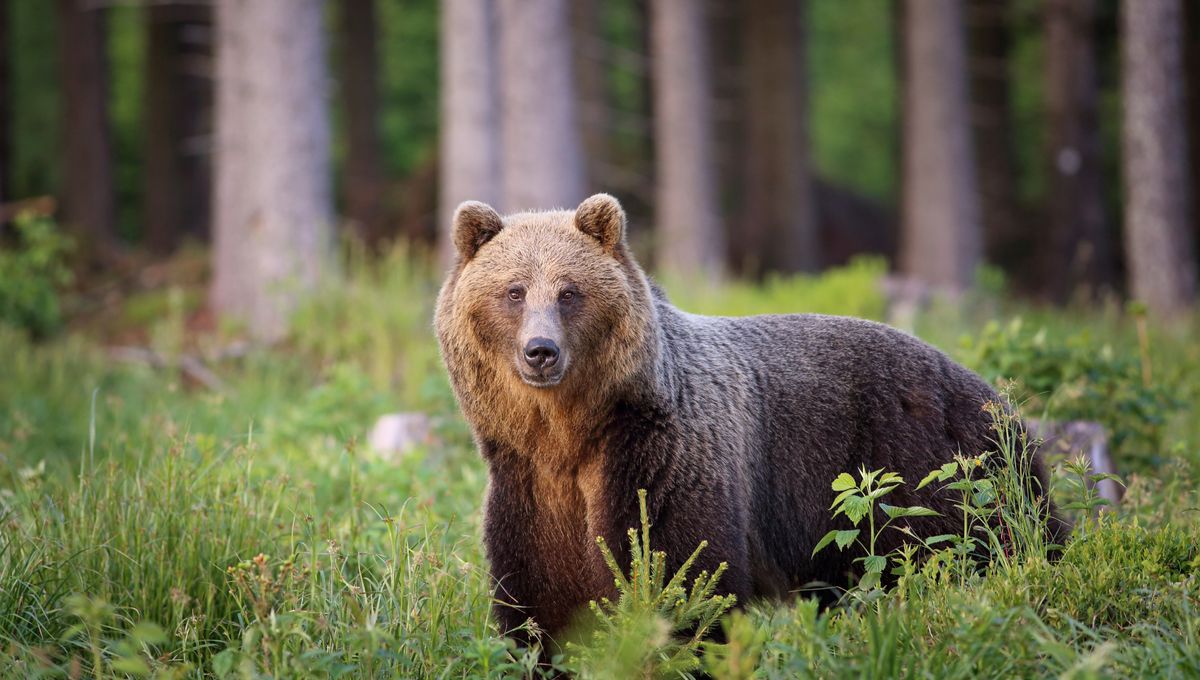
Spring has well and truly sprung in the Northern Hemisphere, and while that might see more of us reaching for the antihistamines as the blooms bring pollen, hay fever isn’t the only thing to be cautious of. In the US, some bears are beginning to come out of hibernation, and that means it’s time to be “bear aware”.
What bears are found in the US?
ADVERTISEMENT
There are three species of bear that can be found in the US: black bears (Ursus americanus), brown (also known as grizzly) bears (Ursus arctos), and polar bears (Ursus maritimus), though the latter is only found in Alaska.
Black bears can commonly be found in the forests and mountains of the Pacific Northwest, though they also live in Alaska, the Rocky and Appalachian Mountains, the upper Midwest, and parts of the South. Brown bears, on the other hand, have a slightly more limited range; most live in Alaska, but small populations can also be found in Idaho, Montana, Washington, and Wyoming.
Hibernation habits
If you’re exploring the Last Frontier, it’s probably a good idea to be bear-aware all the time – polar bears don’t hibernate. Black and brown bears, however, do pass the winter months in a state of metabolic slumber.
Depending on whereabouts in the US they live, black and brown bears will spend the late summer and/or early fall getting their paws on as much food as possible – becoming deliciously chonky in the process – before going into hibernation sometime between September to as late as December.
Then, between March and early May, they begin to emerge from their dens. That’s already happened in Wyoming’s Grand Teton National Park, for example, where the first grizzly of this year’s season was spotted on March 19.
How to be bear aware
As more bears start to come out of hibernation, it marks a great opportunity to spot them in their natural habitat – but that also means being cautious. Bears rarely attack, but their behavior can occasionally be unpredictable. Being “bear aware” helps to keep both humans and bears safe.
ADVERTISEMENT
One of the first steps in being bear aware is to take notice of your surroundings. Have bears recently been spotted in the area? There might be bear poop or tracks on the ground. Staying clear of places where they might eat – such as where berry bushes and animal carcasses are plentiful – can help too.
Another important way to be bear aware is to do the least you can attract to one. Bears generally avoid humans, but there are certain factors that might draw them closer to us – namely, food. If you find yourself in bear country, it’s advisable to make sure you store and dispose of your food where bears can’t get to it.
It’s also a good idea to make plenty of noise, whether that’s having a yap session with your hiking pals or a big ol’ family singsong. This can help to make bears aware that you’re there, at which point they’ll typically stay away from you.
Finally, if you do see a bear, don’t chase after it – keep a safe distance. That shouldn’t need to be said, but y’know, people are people. “If you’re at a safe distance and the bear is not changing its behavior due to your presence, enjoy the moment. Grab your camera and zoom in for a great photo,” advises the National Park Service.
ADVERTISEMENT
What should you do if it ends up being a close encounter? We’ve got that covered too.
Source Link: It’s Spring In The US – And That Means It’s Time To Be “Bear Aware”. Here's How